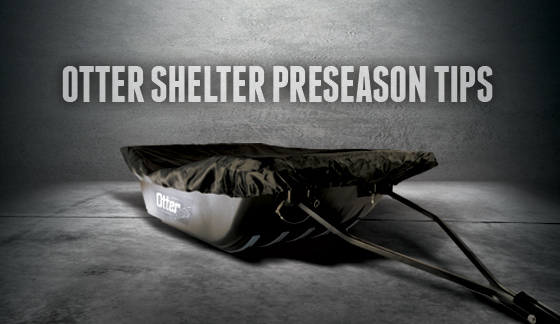
Mice and mold probably pose a greater threat to your Otter ice house than Mother Nature, so before first-ice inspect your fabric for damage sustained during off-season storage.
“If there’s a hole or tear in your shell, it’s much better to find it now than the first time you set up camp on the ice,” advises Otter Pro Chip Leer. “For starters, you’ll be a lot more comfortable in your shelter if wind and snow isn’t blowing through a hole chewed by a mouse. Secondly, a really stiff wind could make the hole worse.”
If you do discover damage to your Otter’s shell, you can order a patch kit from Otter’s website here. Don’t worry, the patches don’t require sewing – they come with an easy-to-use adhesive backing. Otter patches will work on any Otter shelter, as well as on other fish houses.
Frame Care
Constructed from aircraft-grade aluminum square tubing anodized to ensure smooth operation, your Otter’s frame is designed to survive both use and storage without incident. Still, a little pre-season maintenance will help ensure a successful winter.
“Before I start the season, I always wipe down the tubes with a rag sprayed with Teflon spray,” Leer says. Not only will the spray lubricate your poles for effortless set-up and take-down, it also clears away grime and debris and helps prevent water from freezing on the poles and hampering operation.”
Check For Loose Screws
The next step in your pre-season Otter prep is to check for loose screws and nuts.
“Although Otter Ice houses can withstand some major abuse, long, bumpy runs across frozen lakes can loosen fasteners,” Leer says.
Seat-base bolts and frame-pole screws often can use a simple turn or two at the beginning of a new ice-fishing season.
Inspect Your Hitch Connection
Before towing your Otter for the first time this winter, don’t neglect to inspect your hitch. “You’ve got riding on and in your sled,” Leer cautions. “A loose connection between it and your vehicle could cause an expensive spill.”